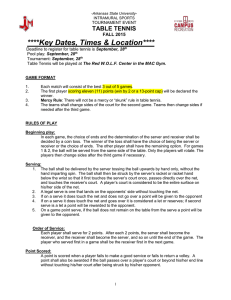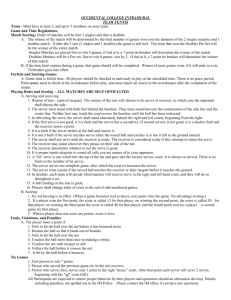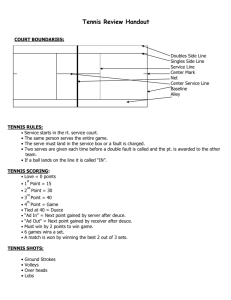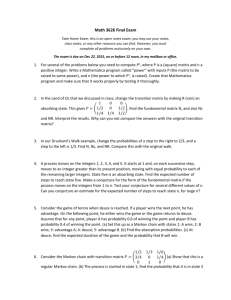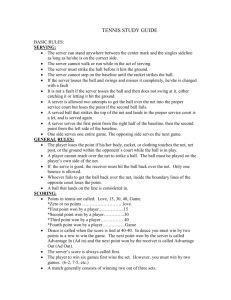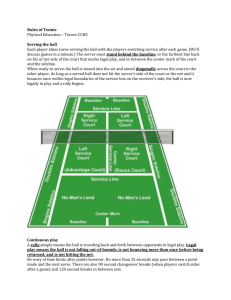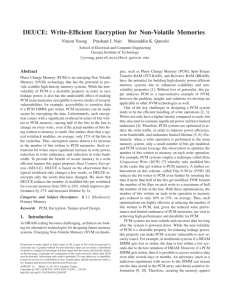Tennis Terminology & Rules: A Beginner's Guide
advertisement
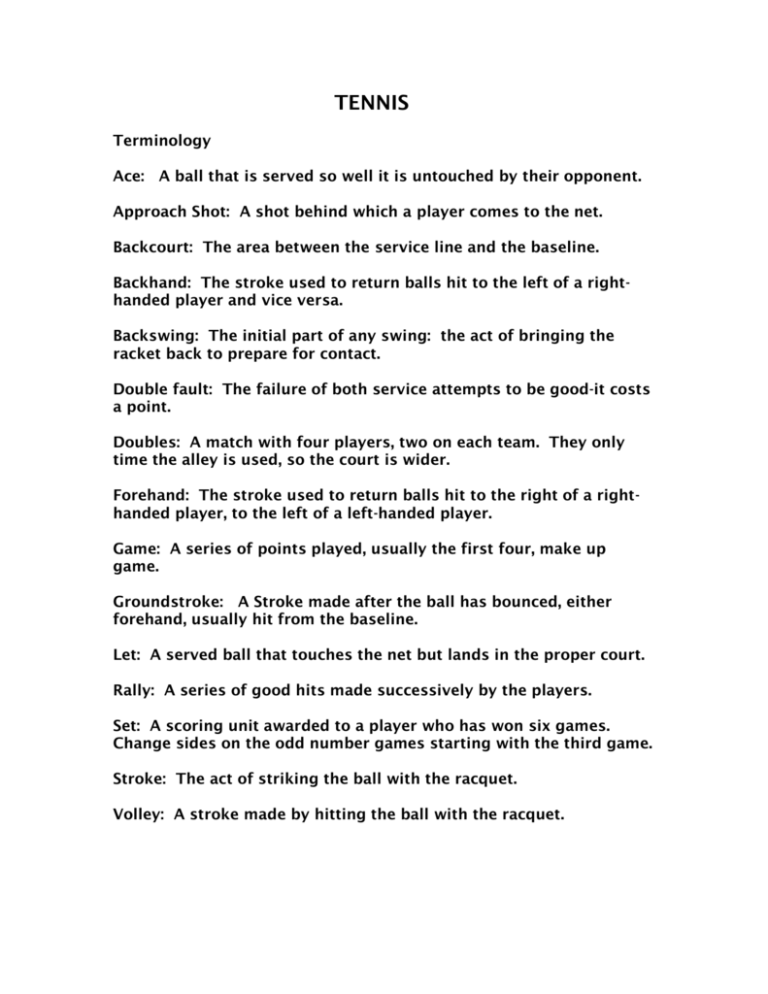
TENNIS Terminology Ace: A ball that is served so well it is untouched by their opponent. Approach Shot: A shot behind which a player comes to the net. Backcourt: The area between the service line and the baseline. Backhand: The stroke used to return balls hit to the left of a righthanded player and vice versa. Backswing: The initial part of any swing: the act of bringing the racket back to prepare for contact. Double fault: The failure of both service attempts to be good-it costs a point. Doubles: A match with four players, two on each team. They only time the alley is used, so the court is wider. Forehand: The stroke used to return balls hit to the right of a righthanded player, to the left of a left-handed player. Game: A series of points played, usually the first four, make up game. Groundstroke: A Stroke made after the ball has bounced, either forehand, usually hit from the baseline. Let: A served ball that touches the net but lands in the proper court. Rally: A series of good hits made successively by the players. Set: A scoring unit awarded to a player who has won six games. Change sides on the odd number games starting with the third game. Stroke: The act of striking the ball with the racquet. Volley: A stroke made by hitting the ball with the racquet. SCORING Begin at LOVE 1st point 15 2nd point 30 3rd point 40 If players are tied at 40-40, DEUCE, play continues until a player wins by 2 points. If the server wins the point after deuce, it is ADVANTAGE IN, if the receiver wins the point after deuce, it is ADVANTAGE OUT. BASIC RULES Rule 1. Opponents stand on opposite sides of the court. The player who delivers the ball to start the point is called the server. The play who stands opposite and cross-court from the server is the receiver. Rule 2. The right to serve, receive, choose your side, or give the opponent these choices is decided by a toss of a coin or racquet. If the choice of service or receiver is chosen, the opponent chooses which side to start. Rule 3. The server shall stand behind the baseline on the deuce court within the boundaries of the singles court when playing singles and within the doubles sideline when playing doubles. See court dimensions. All even points are played from the deuce court and odd number point’s played from the advantage court. The server shall not serve until the receiver is ready. Serves are made from the deuce court to the opponent’s service box on the deuce court. Service continues to advantage court to the receiver’s advantage box. If the server misses his target twice, he loses the point. If the ball hits the net and goes in the correct service box, another serve is granted. If the server steps on the baseline, before contact is made, the serve is deemed a fault. Rule 4. The receiver is deemed ready if an a Tempt is made to return the server’s ball. The receiver can stand where he likes but must let the ball bounce in the service box. If the ball does not land in the service box it is deemed a fault and a second serve is given. If the ball is hit by either opponent before the ball bounces, the server wins the point. Rule 5. The server always calls his score first. If the server wins the first point, he gets a score of 15. Scoring is done like a clock. See scoring above.
